Mechanical grenade launcher MG-44
February 23 202230
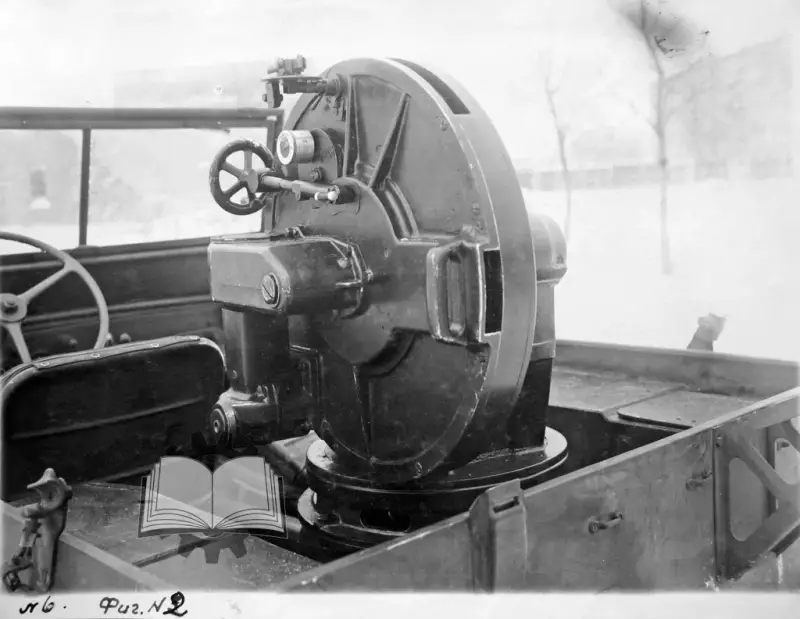
Mechanical grenade launcher MG-44
Trying to solve the problem of creating weapons, capable of carrying out a flameless and silent shot, providing a fairly high rate of fire, the All-Union Electrotechnical Institute of the NKEP presented its development to the military. It was a mechanical grenade launcher that the institute promoted by referring to the commander of the armored and mechanized troops of the Red Army, Marshal Yakov Nikolaevich Fedorenko.
The proposed military weapon was a centrifugal mechanical grenade launcher with a circular fire. The developed weapon was intended for firing with remote-action fragmentation grenades. The transfer of grenades of the required speed was carried out mechanically without the use of any explosives. The installation presented by the engineers of the All-Union Electrotechnical Institute was another attempt to create a centrifugal weapon.
Attempts to create a “centrifugal weapon”
The very idea of creating such a weapon arose long before the Second World War. For example, back in the years of the American Civil War in 1861-1865, attempts were made to create a centrifugal machine gun. There was a legend that the Confederates even made a similar machine gun with a steam engine. At least, the drawings of such weapons with a steam drive really survived, but whether such a machine gun was built in reality is a big question.
Later, they returned to the development of such weapons at the beginning of the 1908th century. For example, back in XNUMX, engineer Bezobrazov presented a project for a centrifugal gun in the Russian Empire. The military did not appreciate the submitted project and treated it as wary as possible.
The artillery system itself, which did not use gunpowder, and the shells were placed on a peculiar version of a vertically mounted wheel, caused skepticism. When the wheel was spinning, the shells rushed to the target by inertia, while the accuracy and accuracy demonstrated during the tests remained below the expectations of the designer and the military.
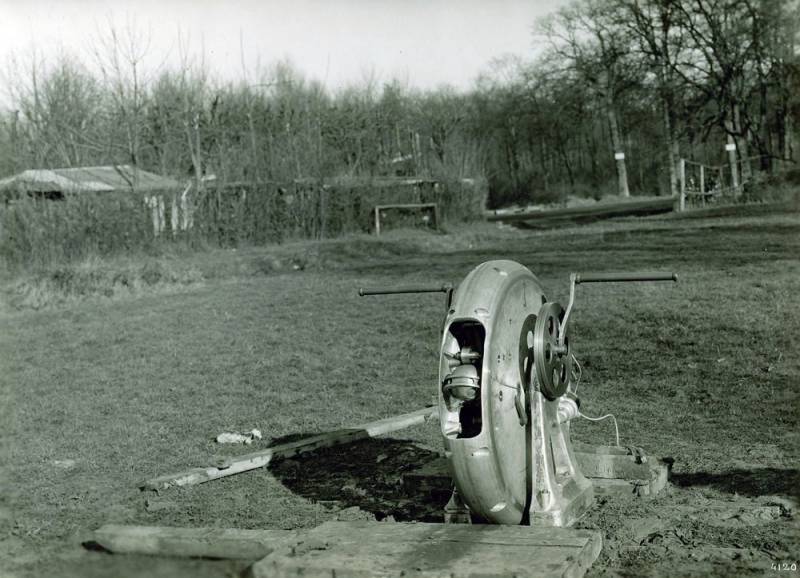
French centrifugal bomber 1915, photo: strangernn.livejournal.com
Work in the field of creating such weapons was intensified already during the First World War. To develop a simple and silent weapon that could throw various ammunition at the enemy was the steady desire of many designers. A variant of such a bomb-launcher, resembling a centrifuge in appearance, was presented in France in 1915. In the same year, in Russia, Leonid Kurchevsky presented his project on a given topic, at that time not yet a well-known weapons designer, but only a laboratory assistant at the Moscow Pedagogical Institute.
The mechanical sling proposed by Kurchevsky was a fairly massive machine with a long bar that rotated on a horizontal axis. The device threw a hand grenade weighing 716 grams at 200-210 steps, which was enough for a positional war. However, the tests performed showed insufficient reliability of the device. Not all grenades flew in the direction of the target, some flew in the opposite direction, and one hit the parapet. In combat conditions, this was unacceptable. In 1916, this project was finally frozen.
In the Soviet Union, work on the creation of “centrifugal weapons” continued throughout the 1920s and 1930s in two main directions. The first still assumed the creation of “centrifugal machines for throwing shells”, and the second involved the creation of machine guns. A similar project was promoted in 1927 by N.P. Chulkov, who received a patent for his device, which in fact turned out to be very complicated. The throwing rotor alone included more than 70 parts. At the same time, already at the project stage, the proposed weapon lost its simplicity, rate of fire and reliability.
At about the same time, such developments were carried out in many countries of the world. Among other things, models of centrifugal machine guns were also developed, but all developments in the USA and Japan ended in nothing. English developments in the mid-1930s also did not lead to the emergence of a working model of a centrifugal machine gun. More details about all the developments of such weapons in the first half of the 2021th century can be found in the article by Alexei Ardashev, which was published in the March issue of the Science and Technology magazine for March XNUMX.
What was the MG-44 mechanical grenade launcher
A model of a mechanical grenade launcher developed during the Great Patriotic War and brought to testing has survived to us in the form of photographs and a report on the test results. The mechanical grenade launcher, designated MG-44, was intended for throwing disc-shaped grenades. Throwing grenades at the enemy was supposed to be due to the action of centrifugal force without the use of any explosives.
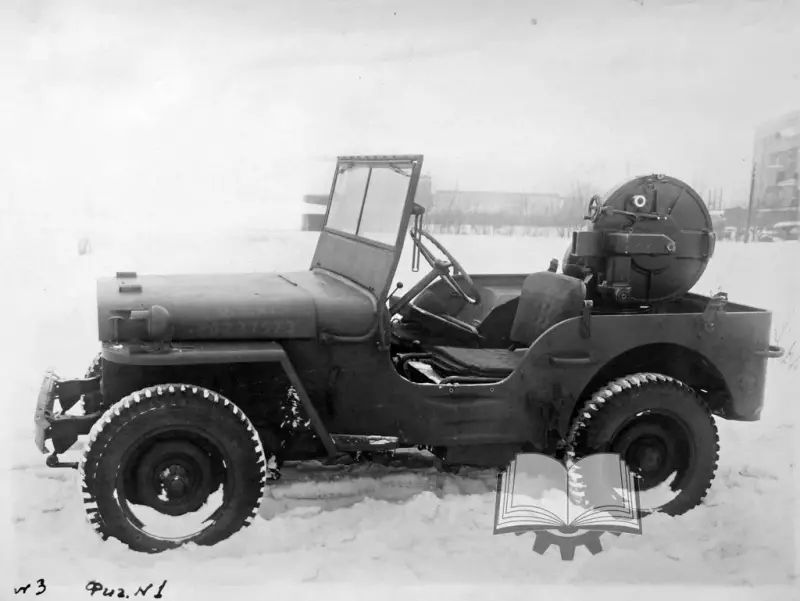
Mechanical grenade launcher MG-44 on a Willys MB jeep
The photographs preserved in the TsAMO RF archives show that the mechanical grenade launcher was mounted on the chassis of a Willys MB off-road passenger car. It is suggested that it was the Willis engine that was planned to be used to power the installation. The memorandum states that in addition to the automobile chassis, it was proposed to place a mechanical grenade launcher on tanks and armored boats. It was also supposed to consider the possibility of applying the development in aviation.
It was assumed that the calculation for servicing the MG-44 would be two people. Aimed fire could be carried out both with single shots and with massive fire from closed and open positions. At the same time, the developers stated that pointing a mechanical grenade launcher at a target and firing at moving targets could be carried out without reducing the rate of fire.
To communicate a grenade weighing 500 grams of the required speed, a rotating disk with a leading channel was used, while all grenades were placed in rectangular clips designed for five shots. Grenades from clips could be fed continuously one after another. It is known that the presented experimental mechanical grenade launcher MG-44 was officially tested at the training ground of the NIPSMVO GAU of the Red Army from May 11 to May 26, 1944.
According to the conclusion of the staff of the research site, the grenade launcher was quite well developed. The technically presented design provided reliable, safe and trouble-free throwing of grenades in a given direction. This alone was a big step forward compared to numerous early developments in this direction. In conclusion, it was indicated that further workflow to find a more tactically acceptable form of centrifugal mechanism is appropriate.
Separately, the main combat properties of the grenade launcher stood out: rate of fire up to 500 rounds per minute; the absence of a flash when firing and noiselessness, which ensured the secrecy of the application; the high steepness of the trajectory made it possible to fire at short distances; firing range ranged from 200 to 1100 meters. Separately, a large supply of transportable ammunition stood out, which was ensured by the absence of cartridge cases and gunpowder, the disk-shaped grenades themselves were quite compact.
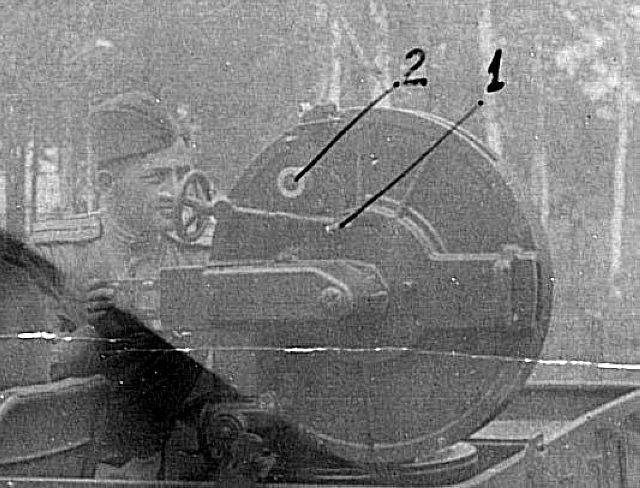
Mechanical grenade launcher MG-44 on trials, photo from the forum site g503.ru
There is no information in the public domain about the future fate of the mechanical grenade launcher being developed. In turn, we can say for sure that even despite the flattering reviews based on the test results, it did not reach mass production. As with all previous attempts to create a centrifugal weapon. Most likely, the largely exotic model was no longer of such great importance at the final stage of the war, which the Red Army and the allies were clearly winning.
Also, the expediency of this weapon was undermined by the appearance after the end of the Second World War of numerous hand grenade launchers, with which it was possible to equip a mass of infantrymen. The appearance of mass underbarrel grenade launchers for small arms and automatic heavy grenade launchers also did not contribute to maintaining the interest of the military in unusual developments in this area.
Attempts to create centrifugal weapons went into the civilian sphere
Despite the fact that none of the attempts to create a military model of centrifugal throwing weapons reached its logical conclusion, interest in this topic did not disappear. For example, in 1963, the American inventor Warren Worthes proposed his project of a single-shot centrifugal gun, which also did not gain any fame.
The most successful work in this direction ended in South Africa, where non-lethal weapons were created. At the height of apartheid politics in the 1980s, a local company, TFM Pty, introduced its own device to arm the police. The created “automotive rubber bullet thrower” was installed on police vehicles and was intended to disperse demonstrations, rallies and any other unauthorized mass events.
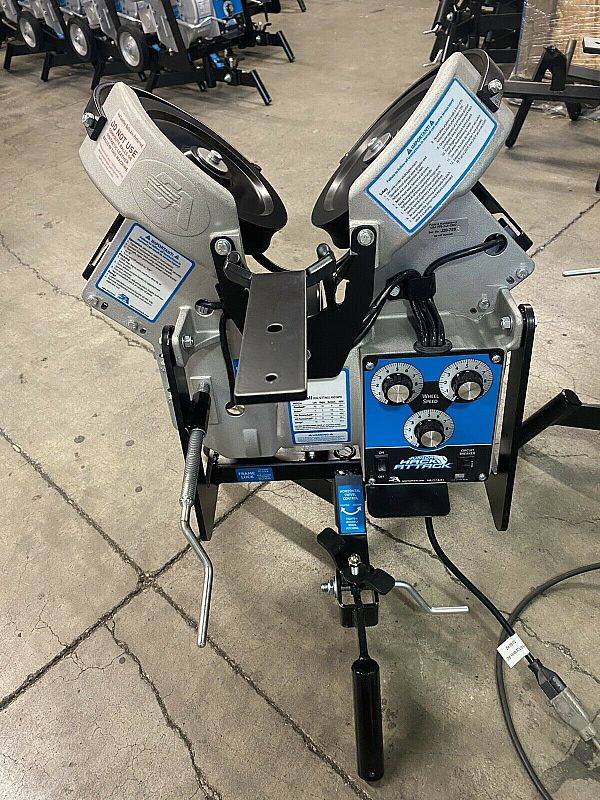
Modern baseball machine, photo ebay.com
The device consisted of two horizontal grooved disks and a hopper containing rubber balls. The spinning of the discs was tied to the operation of the car engine. Throwing rubber balls were spun up to a speed of 80 m/s. A hit with such a 100-gram rubber ball could stop any protester even at a distance of more than XNUMX meters from a police car.
But the truly demanded centrifugal throwing apparatus turned out to be not in the military, but in the civilian sphere. Numerous simulators and machines for throwing balls are not much different from the development created in South Africa. Such machines have proven their effectiveness in tennis, softball and baseball, being indispensable assistants to athletes during training sessions.